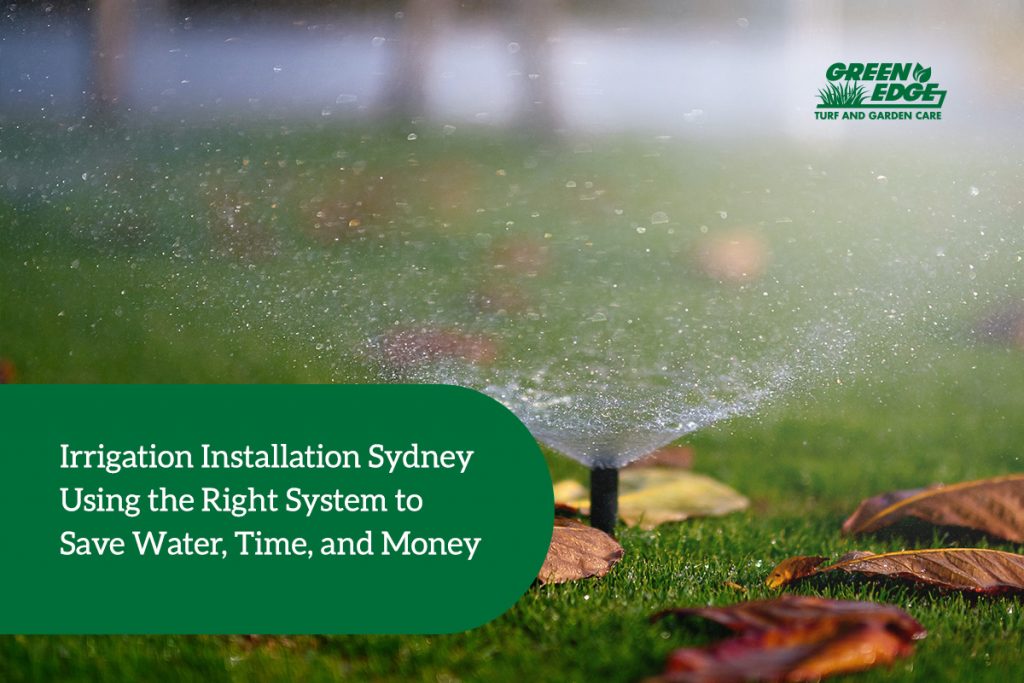During Australia’s long drought of 2019, sprinklers were entirely prohibited for lawns and gardens. If you wanted to have an irrigation installation in Sydney, your only option was a drip system. Also, it was an offence to water your lawns from the main supply. The reason is that drip irrigation feeds water directly to a plant, which helps minimise water wastage and improve water efficiency.
Today, there are still some restrictions in place and people have become accustomed to the new normal of conserving water, which allows permanent water use on Australian gardens and lawns. The ban lift encouraged most residents to connect smart irrigation systems, fix existing ones, or go back to sprinklers. But we should not forget the lesson learnt in the long drought. Water is a precious yet scarce resource that should be conserved.
In this post, we’ll tell you how using the right systems can save water, your time, and money.
Ways To Save Water In The Garden

Keeping plants alive during dry spells is difficult. However, if you are an entrepreneur, you’ll know about the profits that come with growing, harvesting, and selling in these seasons. The price of irrigated crops hikes as normal, while rain-fed plants leave the market.
Therefore, it’s essential to invest in that dry season produce. And yes, you may get drought-resistant seeds and complex irrigation canals. Nonetheless, do you know about the simplest, most effective, and cheapest ways to make your watering more efficient?
Here are easy ways to cut outdoor water use, save time, effort, and money while benefiting the natural environment.
Garden Design – Reduce paving in your outdoors because paved areas intensify heat radiation and water wastage on the site. Also, grow crops with similar water-use together. You can divide your garden plants into high, medium, and low water usage sections.
Soil Improvement – The texture of your soil determines the amount of organic matter and water holding capacity. The finer the soil the greater its water holding capacity. Use hardy deep-rooted plants to loosen poor soils. Besides, adding some compost organic matter promotes microbial activity, improving soil condition plus water retention.
Reduce Your Lawn Area – Lawns often consume a better part of garden energy use. Moreover, you’ll spend more time and money to sustain lawns through weeding, fertilising, mowing, and edging, plus fuelling and equipment maintenance. So, reducing your lawn space is the easiest way to save time, effort, water, and money. Make garden beds or mulch frequently used areas and places with poor grass growth.
Reduce Water Usage on Lawns – Grass types vary by watering needs. Go for a turf that requires less water like Nioaka and couch. Be sure not to scalp the lawn. Instead, set your mower to cut at least 4 cm or higher.
Plant Selection – Thorough plant selection can result in a fascinating and attractive water-efficient garden. Choose plants that match the conditions of your soil and garden. Also, avoid changing your garden in summer since disturbed soils lose more moisture, making it hard for new lawns and plants to survive.
Mulching – It is an essential aspect of a low water-use garden. Always mulch around plants during summer. It helps to save water by stopping evaporation and minimising runoff. Still, mulching can limit weed growth and enhance soil conditions based on the type of mulch.
Watering – It is best to water your plants early morning or evening to allow effective water penetration and prevent evaporation. Also, intermittent deep soakings will help the plant roots to grow deep into the soil. This makes plants more drought-tolerant. Remember to control weeds to minimise water competition with your plants.
4 Affordable and Water-Saving Methods and Irrigation Systems
- Installing Alternate Water Supplies – Connect to alternative water supplies like rainwater tanks and reusing water through greywater systems.
- Automatic Irrigation Systems – Use smart irrigation controllers in your water design. They help to adjust watering needs based on prevailing local weather conditions.
- Drip Irrigation Systems – Drip lines, especially those under the ground or underneath your mulch can reduce water use in your garden. For example, you can prevent water loss through wind drift, runoff, misting, overspray, and puddling.
- Sprinkler Irrigation Systems – Also known as spray systems, sprinklers are great for watering large areas. You’ll want to use them on perennial plants and ground covers. To achieve a water-efficient garden, use the spray system at specific times and days of the week. For instance, avoid turning on the sprinkler on a hot sunny day.
Conclusion
Implementing all of the above tips for your residential or commercial lawns and garden can be tough. It is even tougher if you don’t have a helping hand. Let the GreenEdge Turf & Garden Care help by delivering the best irrigation installation in Sydney for you.
We also provide budget-friendly, effective mowing and gardening services. You can avoid an unappealing lawn by hiring our experienced professionals for lawn turfing. We’ll remove the hassle out of your mowing and gardening needs and improve your image through a well-kept front.
